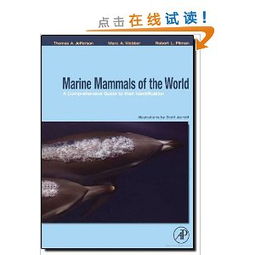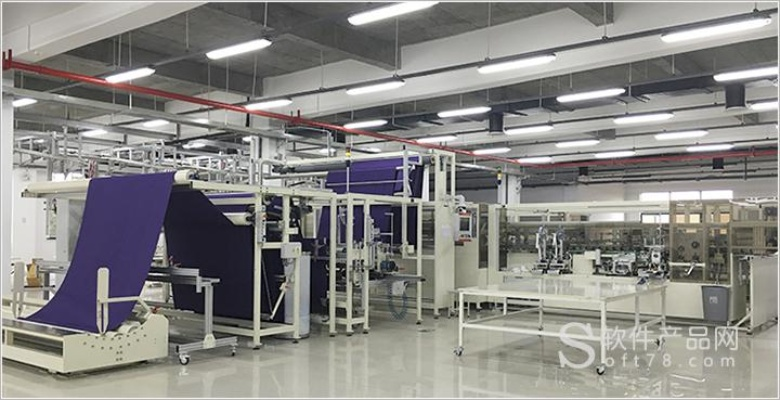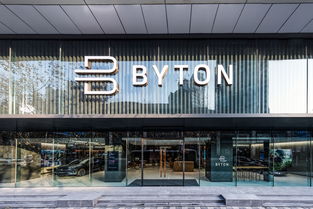The Comprehensive Guide to Textile Goods Foreign Trade Process
This comprehensive guide provides a detailed overview of the foreign trade process for textile goods, including the necessary documents, customs clearance procedures, and export/import regulations. The guide covers topics such as tariffs, quotas, and other trade barriers that may affect the export of textile goods. Additionally, it discusses how to comply with international standards and quality requirements for textile products. By following these steps, businesses can ensure a smooth and efficient import and export process for their textile goods.
Introduction: Textile goods, as one of the most popular export commodities globally, play a crucial role in global trade. In this guide, we will explore the key steps involved in the textile goods foreign trade process, from sourcing materials to final sales. We will also provide an overview of the challenges faced by textile businesses in international markets and offer strategies for overcoming them. By the end of this guide, you will have a comprehensive understanding of the textile goods foreign trade process and be equipped with the knowledge to navigate the complex world of international trade.
Step 1: Product Research and Development (PRD) Before starting the textile goods foreign trade process, it is essential to conduct thorough product research and development. This involves identifying market demand, analyzing competitors, and developing products that meet customer needs. Here's a table summarizing the main steps involved in PRD:
| Step | Description |
|---|---|
| Market Analysis | Conducting research on the target market to understand its needs, preferences, and trends. |
| Competitor Analysis | Analyzing competitors' products, pricing, and marketing strategies to identify gaps and opportunities. |
| Product Design | Developing new or improved products based on market analysis and competitor analysis. |
| Quality Control | Ensuring that the product meets industry standards and customer expectations. |
| Testing and Feedback | Conducting tests to ensure the product performs as expected and collecting feedback from customers. |
Case Study: In 2019, a Chinese textile company launched a new line of clothing made from organic cotton. After conducting extensive market research and competitor analysis, the company identified a gap in the market for sustainable and eco-friendly clothing. They developed a unique blend of organic cotton and recycled polyester, which not only met customer demand but also aligned with their brand values. The company also conducted rigorous quality control testing and received positive feedback from customers. As a result, the new line quickly gained traction in the market and helped the company expand its customer base.
Step 2: Sourcing Materials Once the product has been developed, the next step is to source raw materials and components. This involves finding suppliers who can provide high-quality materials at competitive prices. Here's a table summarizing the main steps involved in sourcing materials:

| Step | Description |
|---|---|
| Supplier Research | Conducting research on potential suppliers to determine their reputation, quality, and cost. |
| Quotation Request | Sending quotations to potential suppliers to compare prices and services. |
| Negotiations | Communicating with suppliers to negotiate better terms and conditions. |
| Sample Order | Providing samples of the product to suppliers to ensure they meet the specifications. |
| Contract Signing | Signing contracts with suppliers to formalize the supply agreement. |
Case Study: In 2020, a US-based textile company needed to source materials for a new line of athletic apparel. The company conducted extensive supplier research and found several suppliers who provided high-quality materials at competitive prices. However, some suppliers had limited experience in producing athletic apparel. To address this issue, the company negotiated with suppliers to develop a customized production process that would meet the specific requirements of the new line. Additionally, the company provided samples of the product to suppliers to ensure they met the specifications. Finally, the company signed a contract with the supplier that included detailed specifications and payment terms. As a result, the company was able to obtain high-quality materials at a reasonable price, and the new line of athletic apparel was successfully launched.
Step 3: Packaging and Shipping Once the materials are ready, the next step is to package them and ship them to the destination country. This involves selecting appropriate packaging materials, designing custom packaging, and ensuring proper shipping documentation. Here's a table summarizing the main steps involved in packaging and shipping:
| Step | Description |
|---|---|
| Packaging Design | Selecting appropriate packaging materials and designing custom packaging to protect the product during transportation. |
| Customs Clearance | Obtaining necessary customs clearance documents and completing customs declaration forms. |
| Shipping Documentation | Providing accurate shipping documentation such as invoices, packing lists, and labels. |
| Packaging and Shipping | Packaging the product and sending it to the destination country using appropriate shipping methods. |
Case Study: In 2018, a Brazilian textile company needed to export its woven fabric to the United States. The company conducted extensive research on shipping options and found that using sea freight was more cost-effective than air freight. However, sea freight required careful packaging to prevent damage during transit. The company hired a professional packaging company to design custom packaging that included bubble wrap, foam inserts, and shrink wrap to protect the fabric. Additionally, the company obtained necessary customs clearance documents and completed customs declaration forms. Finally, the company used sea freight to send the fabric to the United States, where it was successfully delivered to the customer.
Step 4: International Trade Laws and Regulations International trade laws and regulations can significantly impact the textile goods foreign trade process. It is essential to comply with these laws and regulations to avoid legal issues and penalties. Here's a table summarizing the main steps involved in complying with international trade laws and regulations:
| Step | Description |
|---|---|
| Legal Research | Conducting research on relevant international trade laws and regulations to understand their implications for textile goods imports and exports. |
| Compliance Checks | Reviewing compliance with local and international trade laws and regulations before entering into any agreements. |
| Documentation Compliance | Ensuring that all documentation, including contracts, invoices, and shipping documents, complies with international trade laws and regulations. |
| Legal Advisory | Seeking legal advice from professionals when facing legal issues or uncertainties. |
Case Study: In 2020, a Chinese textile company wanted to import textile machinery from Japan. The company conducted extensive legal research on Japanese import regulations, including tariff rates, customs duties, and environmental requirements. The company also reviewed compliance with Japanese trade laws and regulations before entering into any agreements. To ensure compliance with international trade laws and regulations, the company obtained necessary documentation, including purchase orders, shipping documents, and inspection certificates. Additionally, the company sought legal advice from experts when facing legal issues or uncertainties. As a result, the company successfully imported textile machinery from Japan without facing any legal issues or penalties.
Conclusion: The textile goods foreign trade process is a complex and multi-step process that requires careful planning and execution. By following the steps outlined in this guide, textile businesses can effectively source materials, develop products, package and ship goods, and comply with international trade laws and regulations. By doing so, textile businesses can overcome challenges faced in international markets and achieve success in the global textile industry.
纺织品外贸是企业对外贸易的重要组成部分,涉及从原材料采购、生产加工、出口贸易到最终客户收货的全过程,本文将详细介绍纺织品外贸的流程,并结合实际案例进行说明。
纺织品外贸业务流程概述
原材料采购
a. 寻找合适的供应商 b. 签订采购合同 c. 原材料检验与认证 d. 原材料入库
生产加工
a. 制定生产计划 b. 安排生产流程 c. 质量控制与检验 d. 产品包装与出口文件准备

出口贸易
a. 办理出口手续 b. 制定出口报价与合同 c. 安排出口运输与保险 d. 货物清关与出口退税
客户收货与后续服务
a. 与客户沟通收货事宜 b. 提供售后服务与支持 c. 跟踪订单状态与货物运输情况 d. 处理客户反馈与投诉
业务流程案例说明(以实际案例为例)
某纺织品出口企业业务流程分析
-
原材料采购阶段:该企业通过互联网平台寻找合适的供应商,签订采购合同后进行原材料检验与认证,原材料经过严格筛选后入库,确保原材料质量符合出口标准。
-
生产加工阶段:该企业制定生产计划,安排生产流程,确保产品质量和生产效率,该企业注重质量控制与检验,确保产品符合国际标准,在生产过程中,该企业还注重产品包装和出口文件的准备,为出口贸易做好充分准备。
-
出口贸易阶段:该企业在办理出口手续时,制定出口报价与合同,安排出口运输与保险,该企业还为客户提供优质的售后服务与支持,确保客户收货满意,在货物清关与出口退税方面,该企业严格按照相关法规和政策进行操作,确保顺利完成出口贸易。
纺织品外贸业务流程细节说明(表格形式)
以下为纺织品外贸业务流程的详细说明表格:
| 步骤 | 描述 | 时间节点 | 注意事项 | 相关单据或文件 |
|---|---|---|---|---|
| 原材料采购 | 寻找供应商、签订采购合同、原材料检验与认证 | 开始阶段 | 需要关注供应商资质、产品质量、价格等因素 | 采购合同、原材料检验报告、供应商资质证明等 |
| 生产加工 | 制定生产计划、安排生产流程、质量控制与检验 | 生产过程中 | 需要关注生产效率、产品质量、成本控制等因素 | 生产计划表、生产流程图、质量控制检验报告等 |
| 出口贸易 | 办理出口手续、制定出口报价与合同、安排出口运输与保险 | 出货前准备阶段 | 需要关注国际标准、关税政策等因素 | 出口报关单、合同、发票等文件 |
| 客户收货与后续服务 | 与客户沟通收货事宜、提供售后服务与支持、跟踪订单状态与货物运输情况 | 收货后阶段 | 需要关注客户需求、货物运输情况等因素 | 收货确认函、售后服务支持文档等 |
纺织品外贸业务流程涉及多个环节,包括原材料采购、生产加工、出口贸易和客户收货与后续服务,企业需要严格按照相关法规和政策进行操作,注重产品质量和成本控制,提高外贸竞争力,企业还需要加强与客户的沟通与合作,提供优质的售后服务与支持,提高客户满意度。
Articles related to the knowledge points of this article:
The Global Fabric of Bangladesh:An Overview of Dhaka International Textiles
Textile Waterproof Testing Standards and Recommended Practices



